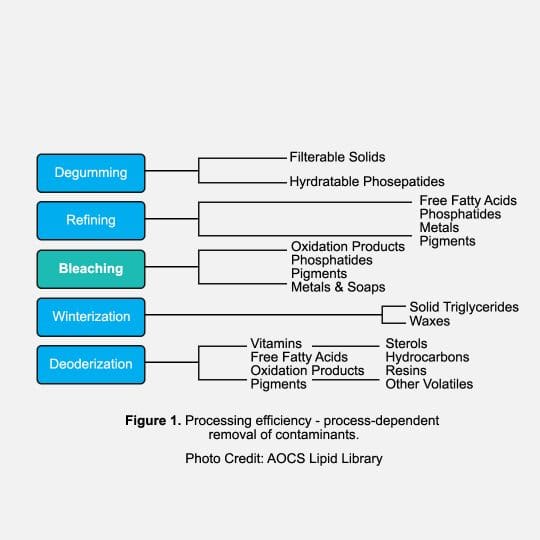Edible Oil Filtration

A fat is solid or semi-solid at room temperature, and an oil is liquid at ambient temperature. Fats and oils are called triglycerides because they are esters composed of three fatty acid units joined to glycerol. These fatty acids are the building blocks for the hormones needed to regulate the body, so fats and oils are essential nutrients in both animal and human diets. Some common sources of edible oils and fats include:
- Soybean
- Palm
- Sunflower seed
- Rapeseed
- Cottonseed
- Peanut
- Coconut
- Olive
- Palm Kernel
Why Filtration Is Important for Edible Oils and Fats
Edible oils and fats can be derived from vegetable or animal sources. Fats and oils obtained directly from rendering (animal source) or extraction of the oilseed (vegetable source) are called “crude” oils and fats. This crude product contains varying substances—free fatty acids, proteins, water, and phosphatides—that impart undesirable flavor, color and keeping qualities, which is why filtration is an important step when producing edible oils. It is also essential for removing clay after bleaching and removing wax after cooling.
Why Choose Diatomaceous Earth for Edible Oil Filtration
It is a mechanical, not chemical process.
Chemicals and food should never be combined, so it is important to have an effective filtration method that is derived from a natural source. That’s where diatomaceous earth fits in. These filters feature irregularly shaped particles that interlace in a fashion that leaves voids or open spaces for oil to fit through. With billions of microscopically fine interstices between particles, unwanted solids are strained from the liquid.
It is efficient.
The packing of the small diatoms is irregular and creates a complex matrix with a very high porosity. This allows the filter media to both remove very small particles and extend the flow rate of the oil being filtered. It permits high initial liquid flow and also provides pore spaces to trap and contain the filterable solids, leaving a high percentage of channels open for flow.
Find Us at the 2018 AOCS Expo.
May 6th through 9th, representatives from Dicalite Management Group will be attending the American Oil Chemists’ Society Expo discovering the latest and greatest about edible oils. If you’re interested in learning about how our diatomaceous earth can help in your edible oil processing, call us today at 866-728-3303.
Join Our Mailing List
Our blog offers insight and information about new and exciting uses for perlite, diatomaceous earth, and vermiculite deriving from years of research and application. From passive fire resistance to mineral depth filtration, by subscribing to our mailing list, you will receive the latest information surrounding the Dicalite, Dicaperl, and Specialty Vermiculite brands and products.

A World of Filtration Experience
A free eBook about using diatomaceous earth, perlite, and cellulose for depth filtration. In this guide, you’ll learn:
- What makes a good filtration medium
- Your filtration options
- And how to use these filtration mediums